Fire Truck / Fire Engine – Water & Foam Pump Vehicle for Emergency Response
CLW GROUP fire trucks and fire engines designed for fast emergency response. Equipped with water tanks, foam systems, and high-pressure pumps. Chassis options include Dongfeng, Isuzu, Sinotruk, FAW, and more.
Engineered to Save Lives and Control Fires
CLW GROUP Fire Trucks / Fire Engines are built for dependable, high-performance emergency response. Designed for urban, rural, industrial, and airport use, these vehicles come with large water tanks, foam systems, and advanced fire suppression equipment. They can also be fitted with ladders, rescue tools, and communication systems for complete readiness.
Key Features:
✔️ Water and foam fire engine options
✔️ Tank capacity from 2,000 to 10,000 liters
✔️ High-pressure fire pump (rear or mid-mounted)
✔️ Roof and side-mounted water cannons
✔️ Rescue storage lockers and lighting system
✔️ Chassis options: CLW, Dongfeng, Sinotruk, FAW, Isuzu
From fire containment to life-saving support — these trucks are built to perform under pressure.
Technical specifications:
| Specification | Details |
|---|---|
| Chassis Brand | CLW, Isuzu, Sinotruk, Sitrak, HOWO, Shacman, Dongfeng, FAW, Foton, Beiben, JAC, JMC |
| Drive Type | 4×2, 6×4 |
| Tank Capacity | 2,000 – 10,000 Liters |
| Fire Pump | High-pressure pump, rear or mid-mounted |
| Fire Monitor (Cannon) | Roof / Side mounted, 30–60 meters range |
| Foam System | Water + Foam mix tank (optional) |
| Cabin Type | 2-door / 4-door with seating for crew |
| Additional Equipment | Rescue lockers, tools, lights, sirens, radio |
Fire Truck / Fire Engine – Water & Foam Pump Vehicle for Emergency Response
This detailed guide offers comprehensive knowledge about fire trucks, fire engines, and the range of emergency vehicles used in fire and rescue operations. Topics covered include vehicle types, pump systems, water and foam handling, chassis configurations, and advanced features from brands like Rosenbauer and Scania.
fire truck: Definition and Role
A fire truck—sometimes known as a fire engine or firefighting apparatus—is a specialized vehicle used by fire services to transport firefighters and firefighting equipment, and to deliver water or foam to extinguish fires. These trucks form the backbone of fire and rescue systems worldwide.
Types of fire engine and their purposes
Water pumpers and tankers
Carry water tank and pump systems capable of delivering thousands of liters per minute.
Commonly used in engine companies for structural and wildland fires.
Aerial apparatus and ladder trucks
Equipped with hydraulic ladders or turntable ladders offering vertical reach.
Frequently seen in fire brigades tackling high-rise rescues and firefighting.
Foam tenders and suppression vehicles
Designed for handling flammable liquids and hazardous materials.
Carry foam concentrate, mixing systems, and foam suppression pumps.
Electric fire truck and emission-free apparatus
Powered by high-voltage batteries, ideal for urban emission-free zones.
No diesel consumption produces quieter, cleaner operation.
Key Components and terminology
Pump, hoses and equipment compartments
A fire engine must carry hoses, water pump, nozzles, and compartments stocked with firefighting equipment.
Crew members can operate from the rear of the vehicle or via side panels.
Water tanks and pumping systems
Tanks range from 2,000–10,000 L or more, depending on chassis; pumps may be diesel‑driven or electrically powered.
Systems like Rosenbauer or Oshkosh offer modular, high‑capacity configurations.
Chassis and apparatus build
Heavy-duty chassis from Scania, Oshkosh, or custom fire apparatus platforms are typical.
Designed for safety, stability, and durability in rough environments.
fire and rescue operations: Use Cases
Structural fires and rescue
Firefighters use pump trucks to extinguish house or building fires, deploying hoses and aerial ladders as needed.
Wildland and brush fires
Wildland fire apparatus carry water tenders and foam to access remote terrain and manage forest fires.
Hazardous material incidents
Foam trucks play a role in chemical plant fires or fuel facility emergencies, utilizing suppression agents carefully.
Emergency roles beyond fires
Fire trucks also support rescue operations, vehicle extrication, and urban search and rescue. Overview of fire rescue operations.
Safety features and modern technology
Lights, sirens, and visibility
Fire trucks are equipped with high‑intensity lights and sirens for superior visibility and safe arrival.
Breathing apparatus and advanced equipment
Many fire engines carry self‑contained breathing apparatus (SCBA) and life-saving tools secured in compartments.
Safety and emission standards
Modern units often feature rollover protection, emission-free powertrains, and ergonomic crew cabins.
Rosenbauer and Scania features
Rosenbauer is known for high-quality fire apparatus with modular, versatile designs enabling rapid configuration changes.
Scania-built fire vehicles combine strong chassis engineering with firefighting equipment integrations.
Sustainability: Electric and Hybrid Fire Trucks
Electric fire truck models
Fully electric fire trucks are emerging, offering emission-free response and lower noise, suited for inner-city zones.
Hybrid systems
Diesel-electric hybrids give long range plus emission reduction, bridging traditional and electric systems.
Equipment and crew considerations
A fire truck must support multiple crew members, typically 4–6 personnel plus equipment.
Includes compartments for tools, nozzles, SCBA, first aid, extrication gear, and more.
Innovations in fire apparatus
Hydraulic aerial ladders
Mounted on turntables with multi-stage extension for high-rise rescue.
Some models integrated with elevated platform and water hose outlets.
Foam injection systems
Variable-rate foam injectors enhance suppression for hazards involving petroleum or chemical fires.
High-pressure rapid intervention pumps
Provide greater pressure for longer reach without loss of flow.
Choosing the right fire truck or rescue vehicle
Selection depends on type of fire, terrain, response area, and required water/foam capacity.
Heavy-duty units for large municipalities vs. smaller compact units for tight city streets. Guidance from Fire Apparatus Selection.
Maintenance and standards compliance
Fire engines must undergo regular pump testing, hose inspections, and pressure checks.
Compliance with safety standards (NFPA, ISO) ensures reliability. See NFPA maintenance guidelines.
CLW Group also provides a powerful boom crane truck, engineered to lift and maneuver heavy loads efficiently across construction, industrial, and logistics applications.Summary: Why fire trucks are mission-critical
From structural and wildland fire response to rescue operations, fire engines—equipped with water tanks, foam systems, aerial ladders, and modern safety features—are designed to tackle diverse emergencies. Innovations from Rosenbauer and Scania continue to enhance reliability and safety in service of firefighters worldwide.
You must be logged in to post a review.
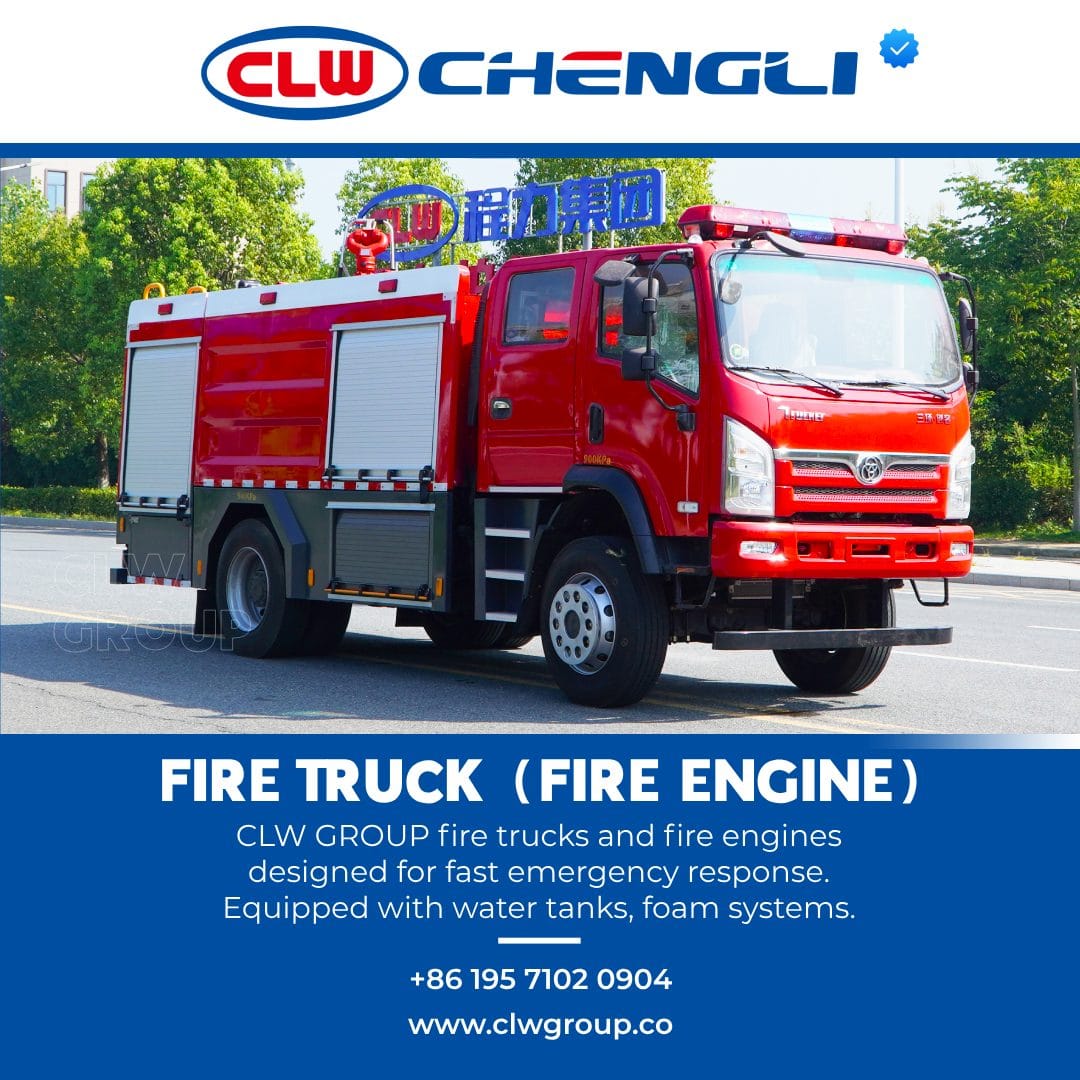

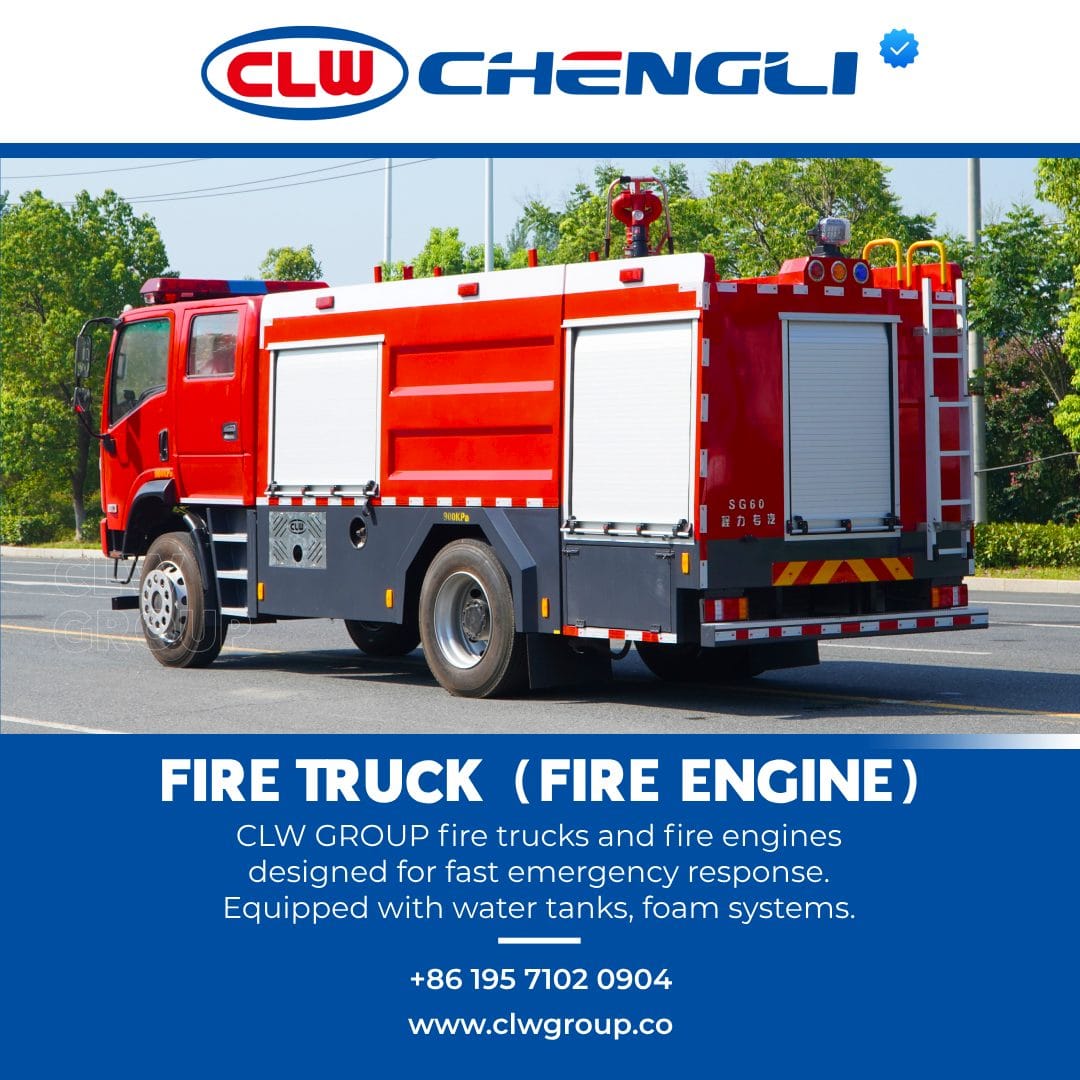
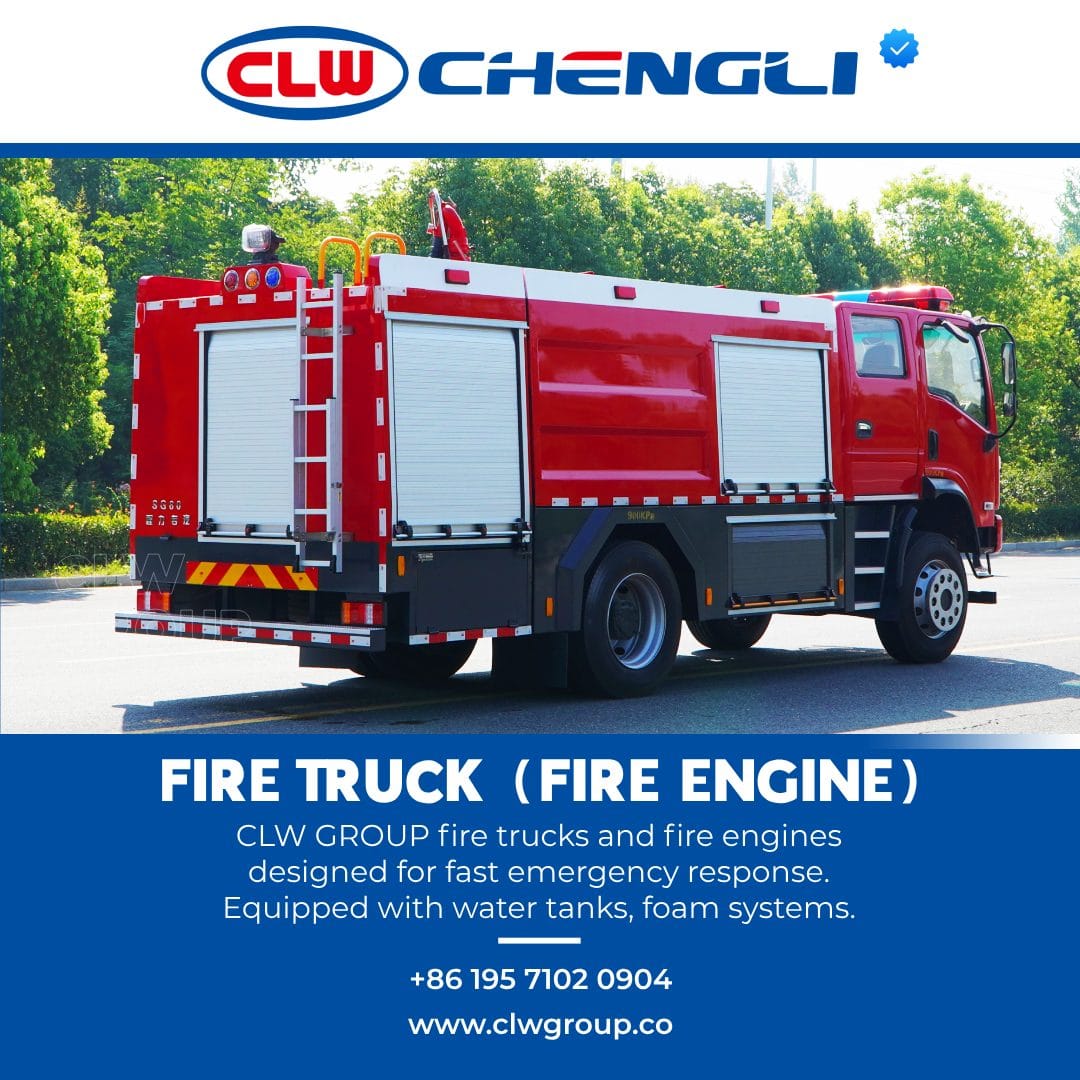
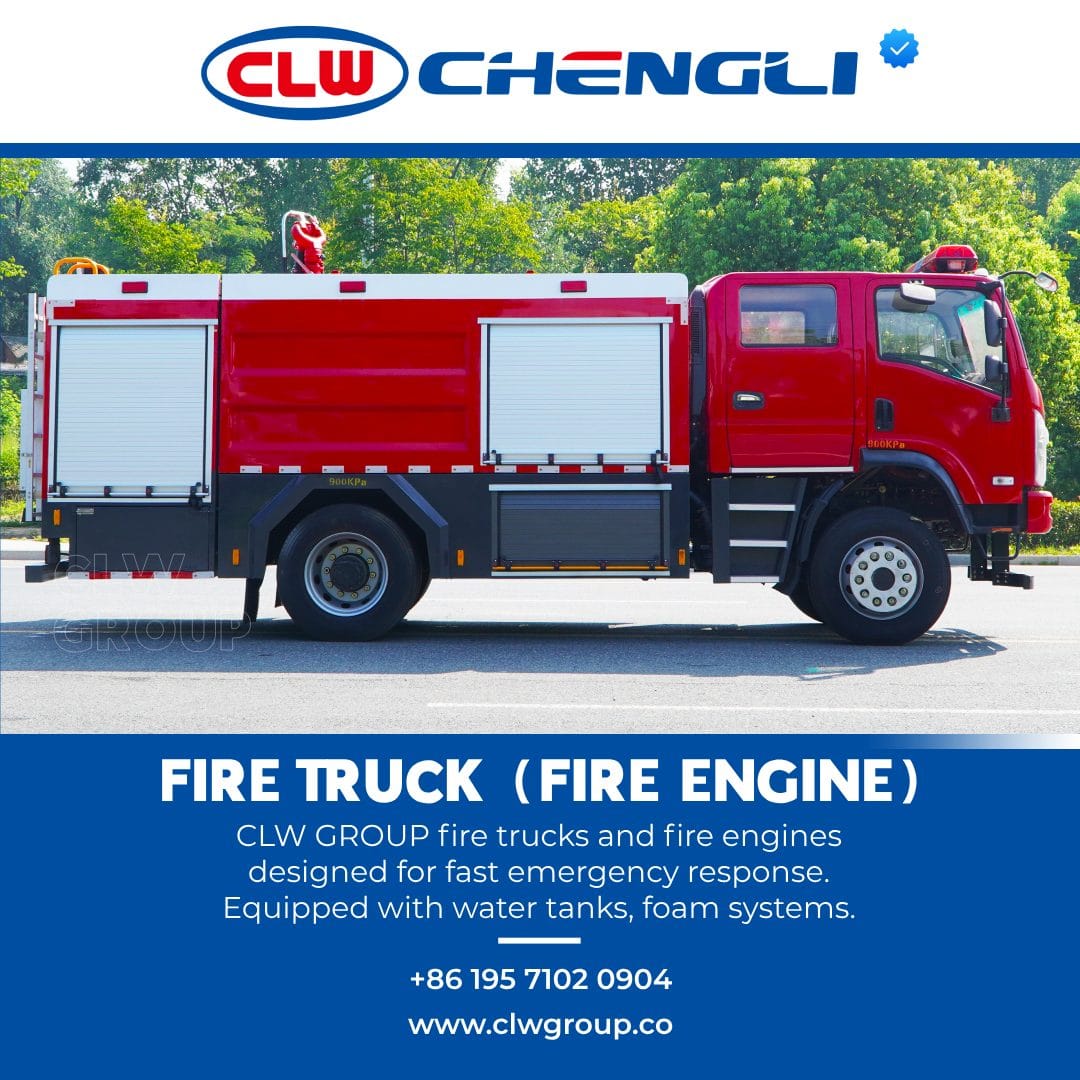
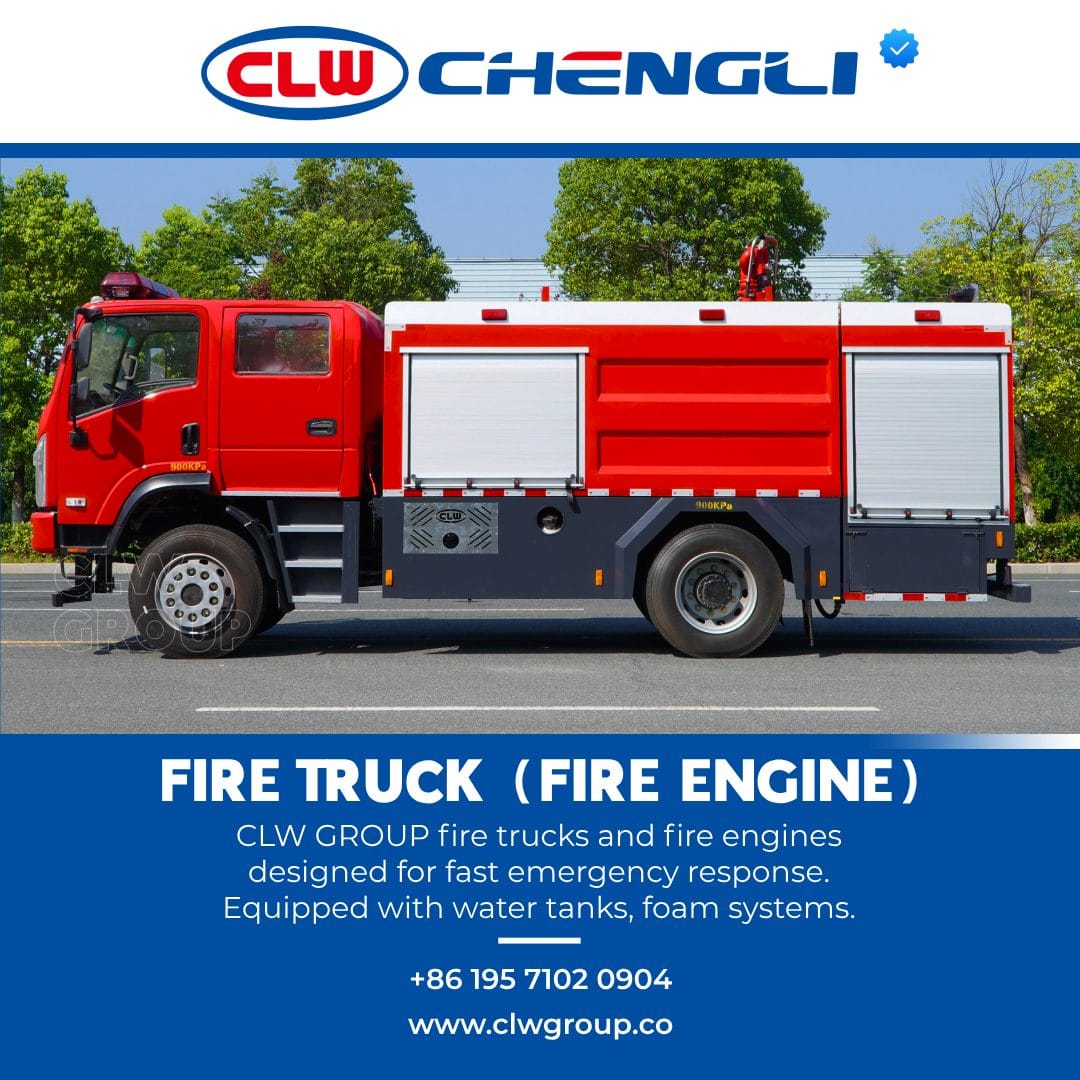
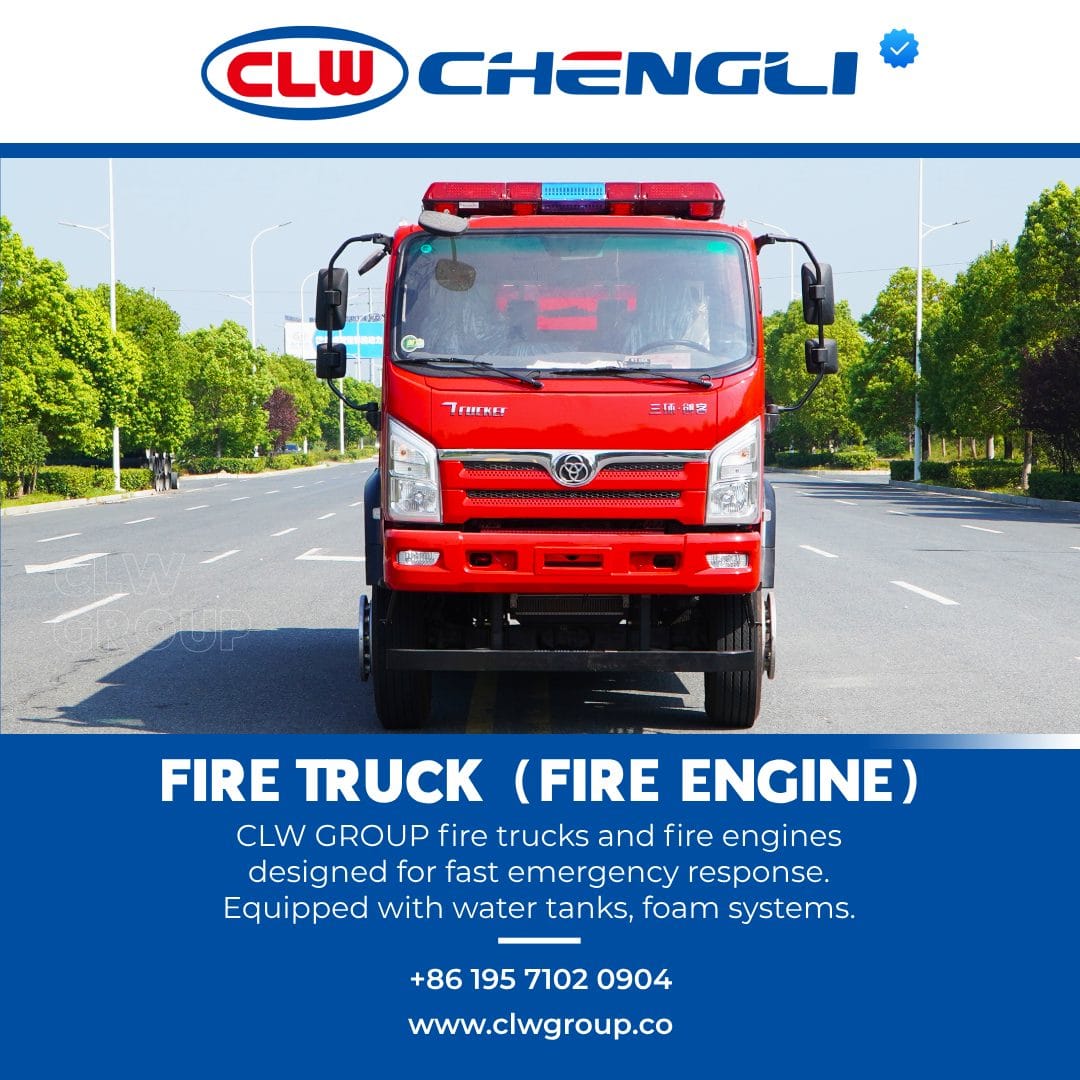
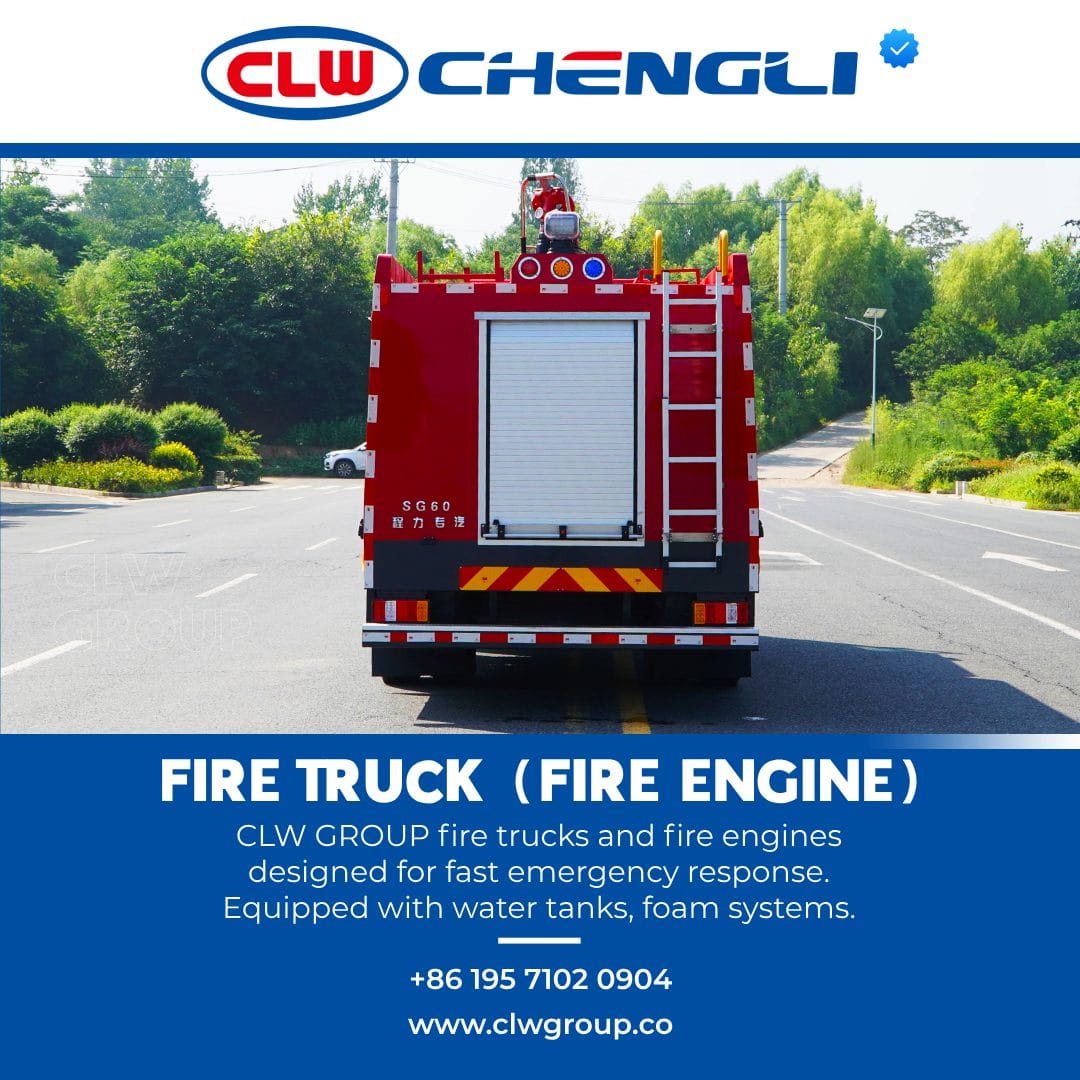
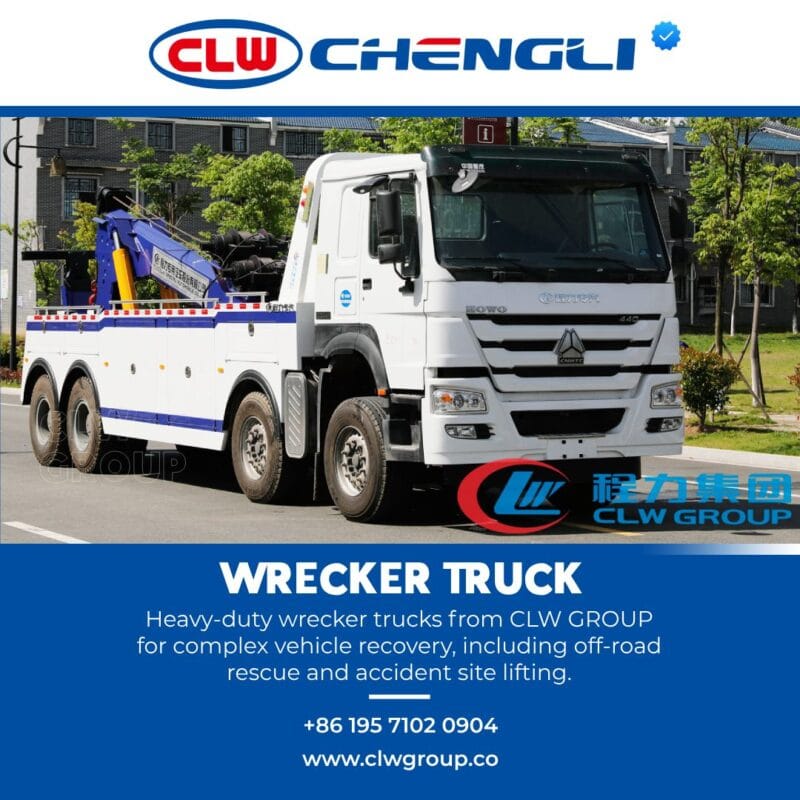

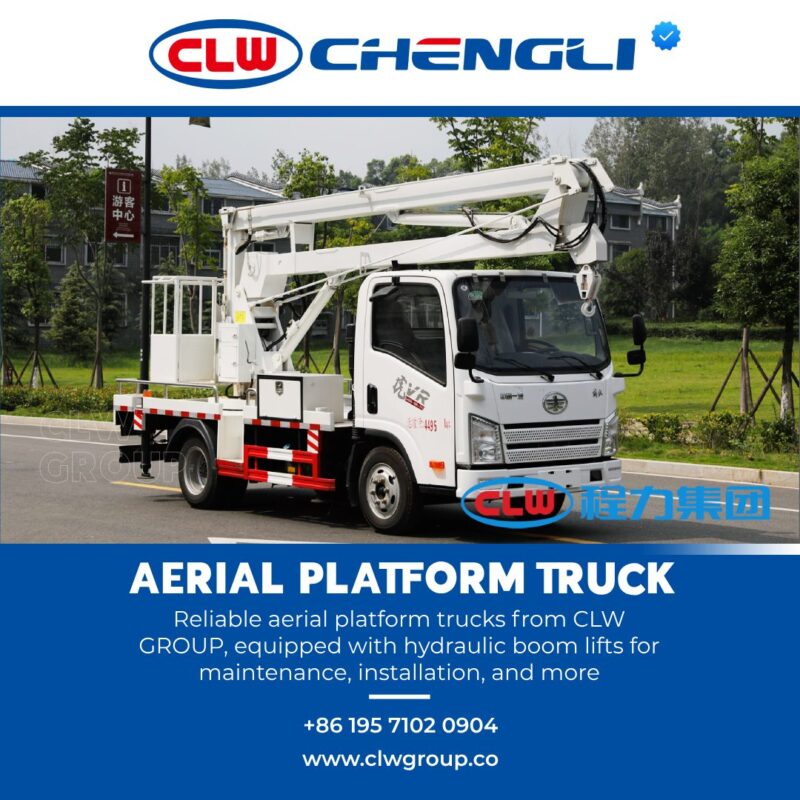

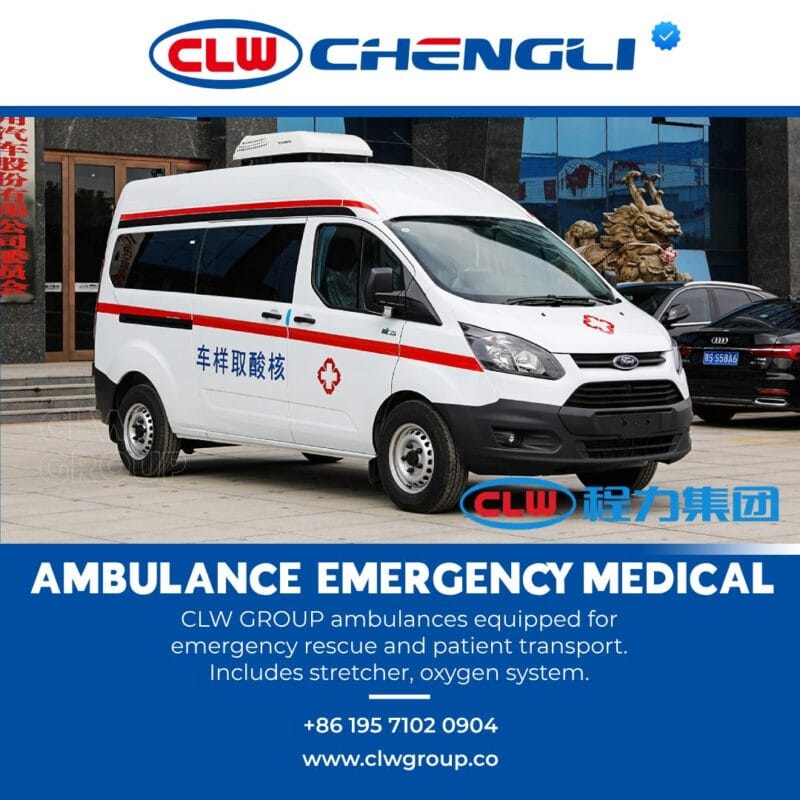
Reviews
There are no reviews yet.